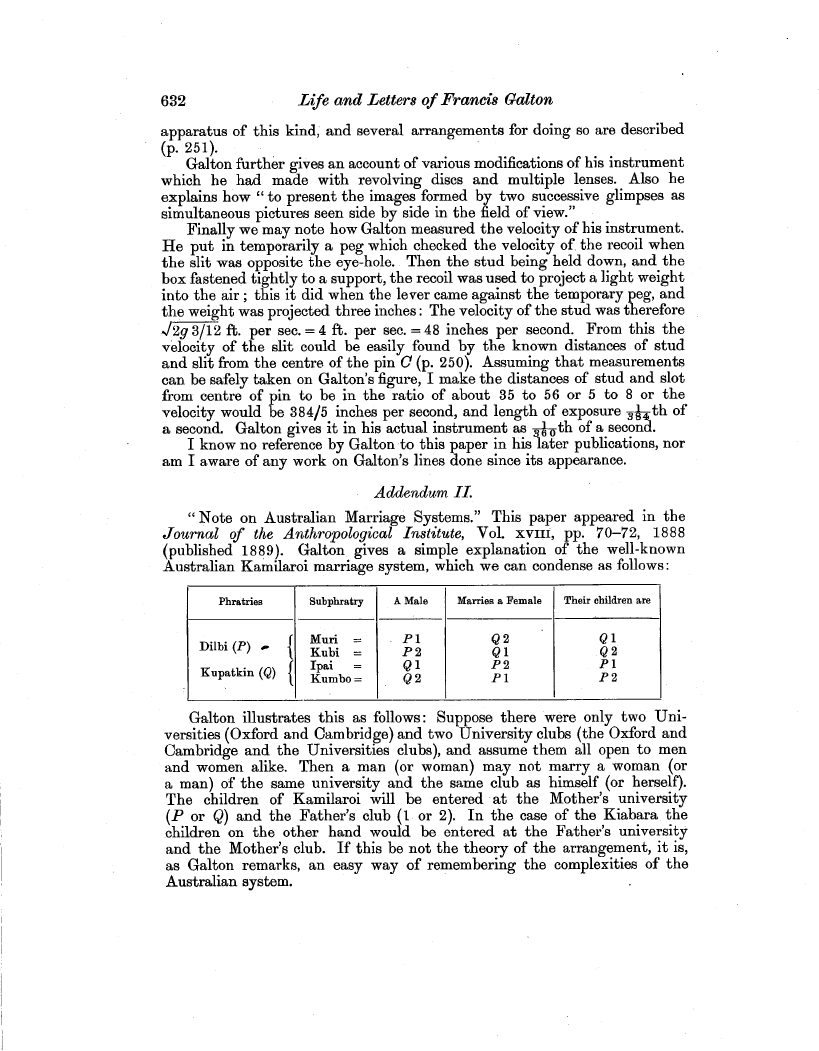| ||||||

OCR Rendition - approximate
632 Life and Letters of Francis Galton apparatus of this kind, and several arrangements for doing so are described (p. 251). Galton further gives an account of various modifications of his instrument which he had made with revolving discs and multiple lenses. Also he explains how " to present the images formed by two successive glimpses as simultaneous pictures seen side by side in the field of view." Finally we may note how Galton measured the velocity of his instrument. He put in temporarily a peg which checked the velocity of the recoil when the slit was opposite the eye-hole. Then the stud being held down, and the box fastened tightly to a support, the recoil was used to project a light weight into the air ; this it did when the lever came against the temporary peg, and the weight was projected three inches : The velocity of the stud was therefore ./2g 3/12 ft. per sec. = 4 ft. per sec. = 48 inches per second. From this the velocity of the slit could be easily found by the known distances of stud and slit from the centre of the pin C (p. 250). Assuming that measurements can be safely taken on Galton's figure, I make the distances of stud and slot from centre of pin to be in the ratio of about 35 to 56 or 5 to 8 or the velocity would be 384/5 inches per second, and length of exposure 384th of a second. Galton gives it in his actual instrument as 31sg a th of a second. I know no reference by Galton to this paper in his later publications, nor am I aware of any work on Galton's lines done since its appearance. Addendum II. " Note on Australian Marriage Systems." This paper appeared in the Journal of the Anthropological Institute, Vol. xvlri, pp. 70-72, 1888 (published 1889). Galton gives a simple explanation of the well-known Australian Kamilaroi marriage system, which we can condense as follows
Galton illustrates this as follows : Suppose there were only two Universities (Oxford and Cambridge) and two University clubs (the Oxford and Cambridge and the Universities clubs), and assume them all open to men and women alike. Then a man (or woman) may not marry a woman (or a man) of the same university and the same club as himself (or herself). The children of Kamilaroi will be entered at the Mother's university (P or Q) and the Father's club (1 or 2). In the case of the Kiabara the children on the other hand would be entered at the Father's university and the Mother's club. If this be not the theory of the arrangement, it is, as Galton remarks, an easy way of remembering the complexities of the Australian system.
|